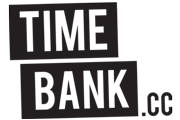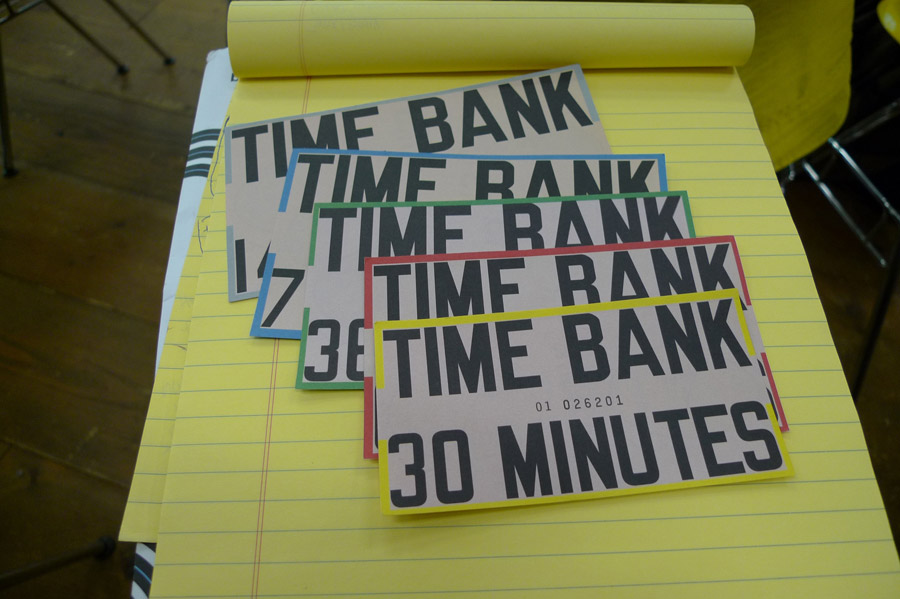White Hot Magazine, June 2011
How to Time/Bank
For half a year, I’ve been logging into my e-flux Time/Bank account, only to poke around for a minute before closing out. Like many, I’ve managed to form a versatile network of friends from which I can find couches to surf, shrewd editors, language coaches… Meaning, it has been hard for me to look beyond my flock to solicit or offer services on Time/Bank, a marketplace for such exchanges.
A few weeks ago, I went to The Hague for a talk about timebanking at Stroom, home to Time/Bank’s newest branch. Paul Glover, founder of Ithaca Hours – a model system for alternative economies and a relative triumph with about 5% local participation – explained how his plan to reduce dollar dependency has been working for twenty years. Basically, Paul worked his ass off to gain trust in the time-based currency and to diversify the goods and services available. Today, it is possible to buy Ben & Jerry’s ice cream or pay for a physical with the local tender. Such is the desired future of Time/Bank.
Like in Ithaca, Time/Bank has its own currency and offers real-time situations for its use. The project seeks to establish an alternative economy which gives the art world agency over itself and supplements, and eventually replaces, traditional sources of power associated with private or government capital. To get there, co-founders Julieta Aranda and Anton Vidolke are setting up local branches that normalize their big idea and get it into practice on a smaller scale.
Stroom is the perfect testing ground for site specific possibilities. Maaike Lauwaert, curator of the visual arts program, has committed one year to the Time/Bank. To get the hour notes moving, Maaike pays her volunteers in the currency. Web-based exchanges are also taking place. As people accumulate hours, they can cash in for notes that they can use in the shop or about town at arts organizations that accept the currency for entrance fees and products. Soon Stroom will be charging Hour notes as entrance fees to workshops and lectures, a pragmatic solution to the organization’s budget cuts. In addition, a multi-city network (The Hague, Amsterdam, Rotterdam and Utrecht) is underway with plans for new branches and more Time/Bank-note-friendly locations.
Holland is a special case for this kind of enterprise. Its arts scene is tight knit and everyone is accountable. In this sense, although its network crosses several cities, this Time/Bank still has the small-town feeling that has made Ithaca’s program successful. Meanwhile, this is just one branch of a project with a global reach. Time/Bank’s big picture objective to connect a global arts community has to be supported online to thrive. When I told Maaike about my difficulty in getting involved on the website, she suggested that I take a minor leap of faith and extend the reaches of my network.
Some people feel a bit shy about what they can offer. To help give a boost to The Hague’s online participation, Maaike is organizing a Time/Bank matchmaking session this summer. For the rest of us, it’s time to get creative. Paul Glover attributes the success of Ithaca Hours to community creativity – the program grew both for and because of local initiators and entrepreneurs. In other words, participants invented or adapted needs in order to keep their alternative economy relevant and fresh. Here’s my solution: I’ve offered myself as a city-expert to Barcelona. For two Time/Bank hours I’ll make you a list of the best of the best.
Sara Blaylock was born and raised in Milwaukee, schooled in Oakland and has since lived as an artist, writer and educator in Western Massachusetts, Barcelona and rural Holland. She is presently studying in the Visual Studies PhD program at the University of California – Santa Cruz. Her artwork and writing can be found at: www.sarablaylock.com

